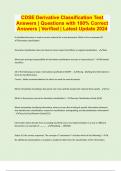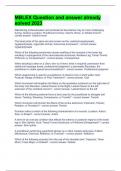Summary
Summary Information Systems 188
- Course
- Institution
This summary is made from the textbook as well as the slides provided by the lecturers. It is easy to follow; headings and definitions are clearly laid out. The same style has been used throughout. By using these notes it is really easy to get good marks, even distinctions. This summary is just for...
[Show more]







